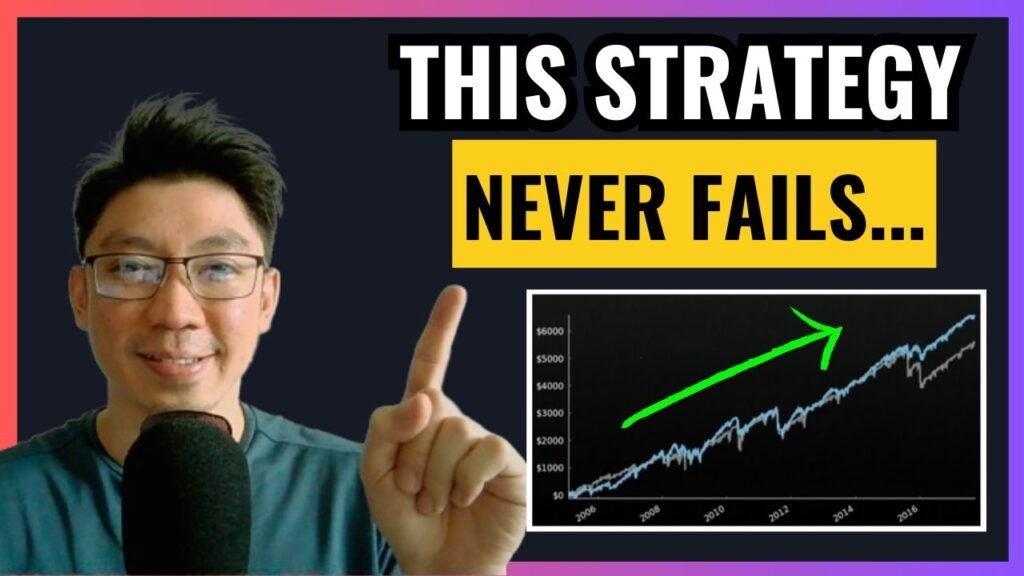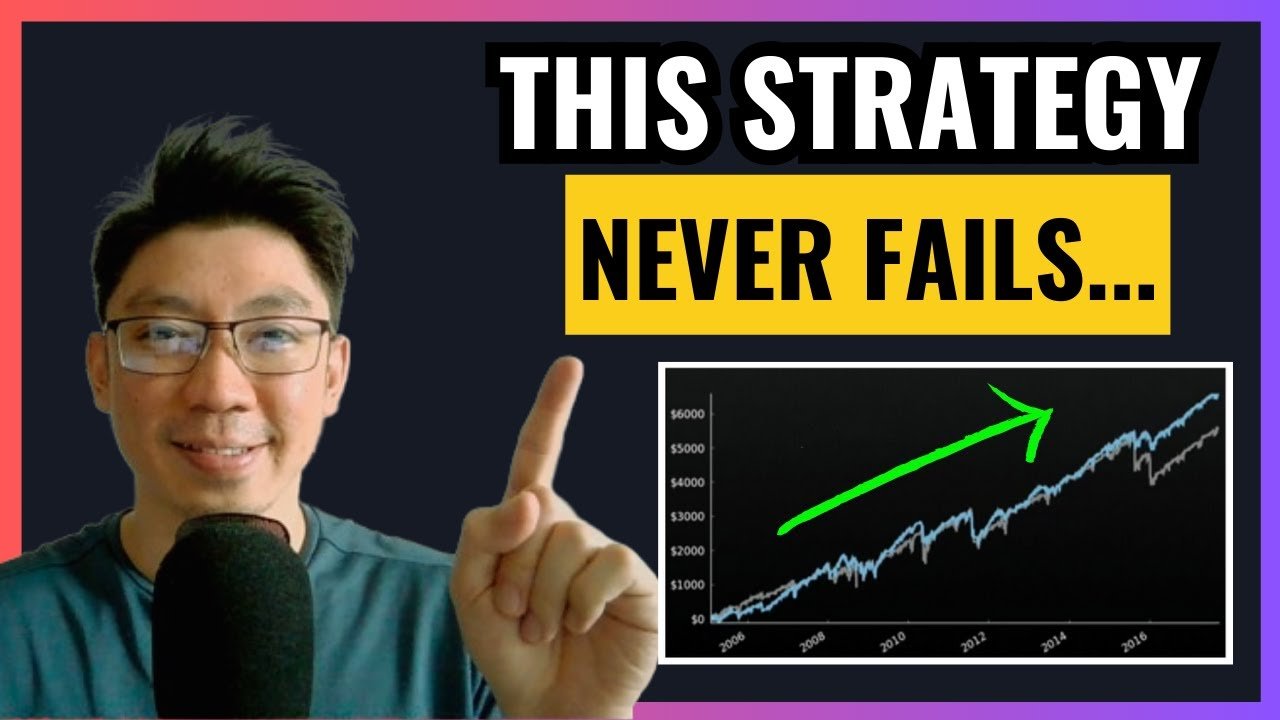In the video titled “Make A Living Trading This ONE Option Strategy (For Beginners)” by Options with Davis, you will learn about a powerful strategy that can help you make a living from trading the markets. This strategy, known as the put credit spread or Bull put spread, is safe, simple to execute, and has a high win rate. With a limited maximum loss and short losing streaks, it is an ideal strategy for beginners. The video also mentions other videos that cover different option trading strategies like credit spreads, iron condors, and the wheel strategy, providing a comprehensive understanding of options trading for generating income. Join Options with Davis to learn how to implement this strategy and gain access to valuable resources for your option trading journey. Remember, this strategy has been extensively studied and proven to be profitable over the long term, especially when applied to index ETFs like SPY.

Overview of Options Trading Strategies
Introduction to options trading
Options trading is a popular method of investing that offers flexibility and potential for high returns. It involves trading contracts known as options, which grant the buyer the right, but not the obligation, to buy or sell an underlying asset at a specific price within a specified period.
Importance of having a strategy
Having a well-defined options trading strategy is crucial for success in the market. A strategy provides a systematic approach, helping you make informed decisions and manage risks effectively. It also helps you stay disciplined and avoid impulsive trades based on emotions or short-term market fluctuations.
Different strategies to generate income
There are several options trading strategies available, each with its own advantages and considerations. Some popular income-generating strategies include credit spreads, iron condors, and the wheel strategy. In this article, we will focus on the put credit spread, also known as the Bull put spread, as a simple and safe strategy for beginners.
Introduction to the Put Credit Spread
Explanation of the put credit spread
A put credit spread is a bullish options strategy that involves selling a put option with a higher strike price and buying a put option with a lower strike price. By doing this, you receive a credit (premium) for the trade, hence the name “put credit spread.”
Overview and benefits of the strategy
The put credit spread is a defined-risk strategy, meaning your maximum loss is predetermined. It offers a high win rate, as much as 80-90%, and has short losing streaks, making it psychologically easier to handle. This strategy is particularly suitable for beginners due to its simplicity and limited risk.
Why it is suitable for beginners
The put credit spread is an excellent strategy for beginners because it has limited risk and is relatively easier to understand and execute. As a new options trader, it is essential to start with conservative strategies that minimize potential losses and allow you to learn and gain confidence in the market.
Understanding Bull Put Spread
Definition and concept of Bull put spread
A bull put spread is an options strategy that entails selling a put option with a higher strike price and simultaneously purchasing a put option with a lower strike price. This strategy aims to profit from a moderately bullish market outlook by capitalizing on time decay and limited downside risk.
How it differs from other strategies
The bull put spread differs from other strategies in terms of its risk profile and profit potential. It is a defined-risk strategy, meaning your maximum loss is known upfront, and it offers a limited maximum profit. Compared to more complex strategies, the bull put spread is relatively easier to understand and execute.
Risk management and maximum loss
One of the key advantages of the bull put spread is its limited risk. The maximum loss is equal to the difference between the strike prices minus the premium received. By carefully selecting the strike prices and managing your positions effectively, you can control and minimize potential losses.
Advantages of Bull Put Spread
High win rate and limited maximum loss
The bull put spread offers a high win rate, typically ranging from 80% to 90%. This means that a significant majority of your trades can result in profits. Additionally, the strategy has a limited maximum loss, which provides peace of mind and allows you to manage risk effectively.
Psychological benefits of short losing streaks
One of the psychological challenges in trading is handling consecutive losses. The bull put spread strategy has short losing streaks, which means you are less likely to experience extended periods of losses. This can help boost your confidence and keep you motivated to stick to your trading plan.
Long-term profitability
Extensive studies have shown that the bull put spread, particularly on index ETFs like SPY, can be profitable over the long term. This is due to the positive drift of the market, as index ETFs tend to appreciate in value over time. By consistently executing the bull put spread strategy, you increase your chances of long-term profitability.
Executing the Put Credit Spread
Basic steps and requirements
Executing a put credit spread involves several steps. First, identify an underlying asset that meets your criteria for trading. Then, select the desired strike prices for the put options, considering your risk tolerance and profit target. Finally, place the trade by selling the higher strike put and buying the lower strike put simultaneously.
Choosing the right underlying asset
When trading the put credit spread, it is crucial to choose a suitable underlying asset. Index ETFs like SPY are popular choices due to their liquidity and positive market drift. Additionally, consider the asset’s historical volatility and overall trend to increase the probability of success.
Selecting the appropriate options
Selecting the right options for the put credit spread is essential. Look for options with a suitable expiration date and strike prices that offer an optimal risk-reward ratio. Consider the time decay and implied volatility to ensure you receive a favorable premium for selling the higher strike put.
Comparison: Perpetual vs. Selective Method
Explanation of perpetual method
The perpetual method refers to continuously placing and closing put credit spread trades at a fixed interval, such as every 21 days until expiration (DTE). This method aims to generate consistent income by constantly rolling over trades.
Benefits and drawbacks
The perpetual method offers the advantage of a consistent income stream, as trades are continually placed and closed. It also allows for a systematic approach to trading and minimizes decision-making biases. However, it requires active monitoring and may result in more frequent trading costs.
Explanation of selective method
The selective method involves selectively placing put credit spread trades based on oversold conditions and support levels in the market. Trades are not continuously placed on a fixed schedule but rather when specific criteria align.
When to use each method
The choice between the perpetual and selective method depends on your trading style and preferences. The perpetual method may be more suitable for those seeking a consistent income stream, while the selective method may be preferred by traders who want to capitalize on specific market conditions and reduce trading frequency.
Risk Management and Exit Strategies
Setting stop-loss orders
Implementing appropriate risk management techniques is crucial when trading the put credit spread. One effective method is setting stop-loss orders, which automatically close your position if the trade moves against you. This helps limit potential losses and protect your capital.
Profit-taking and scaling out
Profit-taking is an essential aspect of managing your trades. By taking profits when the target is reached, you lock in gains and reduce the risk of a reversal. Scaling out involves closing a portion of the position to realize some profits while leaving the rest open for further potential gains.
Adjusting trades in response to market conditions
Monitoring market conditions and making adjustments to your trades is a vital part of successful options trading. If the underlying asset’s price approaches your strike prices or if volatility increases significantly, you may need to consider closing or adjusting your position to manage risk effectively.
Backtesting and Historical Performance
Importance of backtesting
Backtesting is the process of evaluating a trading strategy using historical data to assess its performance. It allows you to simulate trades and analyze how the put credit spread strategy would have performed in different market conditions. Backtesting helps you gain insights into the strategy’s strengths and weaknesses before risking real money.
How to backtest the put credit spread strategy
To backtest the put credit spread strategy, you can use options analysis software or trading platforms that offer historical data and backtesting capabilities. Start by inputting the desired strike prices and expiration dates, and analyze the strategy’s performance over various market scenarios.
Reviewing historical performance and profitability
By reviewing the historical performance of the put credit spread strategy, you can assess its profitability over time. Look at key metrics such as win rate, average return, and maximum drawdown to evaluate the strategy’s effectiveness in different market environments. This helps you make informed decisions and refine your approach.
Additional Resources and Recommended Videos
Other option trading strategies to consider
While the put credit spread is a powerful strategy, there are other option trading strategies worth exploring. Some popular alternatives include iron condors, the wheel strategy, and various volatility strategies. Consider learning about and incorporating these strategies into your trading arsenal to diversify your approach.
Links to related videos and resources
If you’re interested in learning more about option trading strategies, Options with Davis offers a variety of informative videos on their YouTube channel. Check out their videos on generating income with credit spreads, consistent income with the iron condor, and recurring profits with the wheel strategy.
Further educational materials and sources
To deepen your understanding of options trading and enhance your skills, there are various educational materials and sources available. Consider books, online courses, webinars, and financial websites that provide comprehensive resources on options trading strategies, risk management, and technical analysis.
Conclusion
Recap of the benefits and suitability of the put credit spread for beginners
The put credit spread is an excellent options trading strategy, especially for beginners. Its limited risk, high win rate, and short losing streaks make it an attractive choice for those starting out in options trading. By following a systematic approach and practicing risk management, you can increase your chances of success with the put credit spread strategy.
Encouragement to explore and practice the strategy
If you’re interested in options trading and want a safe and straightforward strategy to start with, the put credit spread is worth exploring. Take the time to understand the strategy, practice in a simulated trading environment, and gradually build your confidence. With dedication, discipline, and continuous learning, you can become a successful options trader.
Final thoughts and closing remarks
Options trading offers immense potential for profit and income generation, but it also involves risks. When it comes to selecting strategies, it’s crucial to choose those that align with your risk tolerance, financial goals, and trading style. The put credit spread provides a solid foundation for beginners and can be a valuable tool in your options trading journey. Remember to always do your due diligence, stay informed about market conditions, and adapt your strategies as needed.
